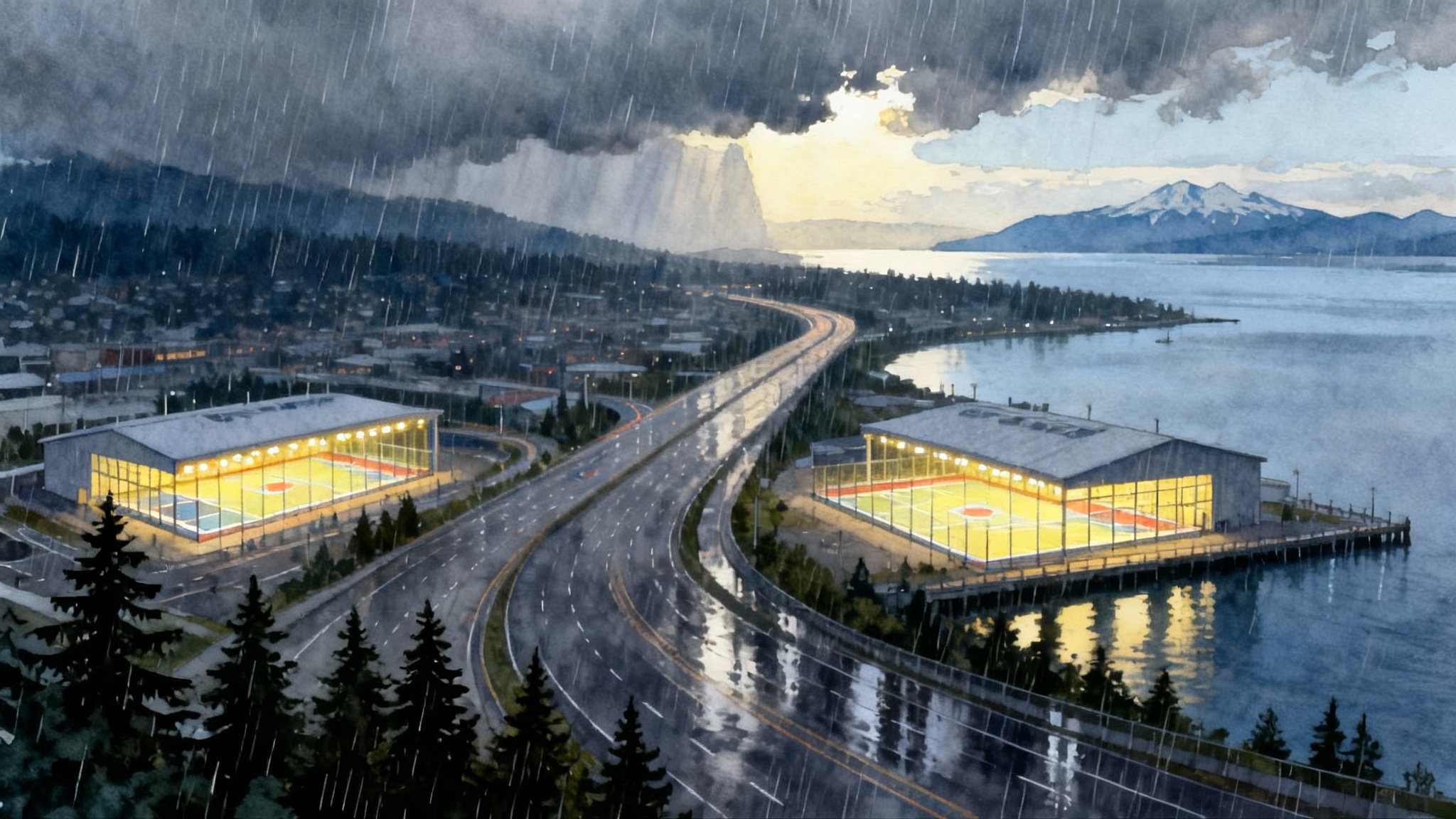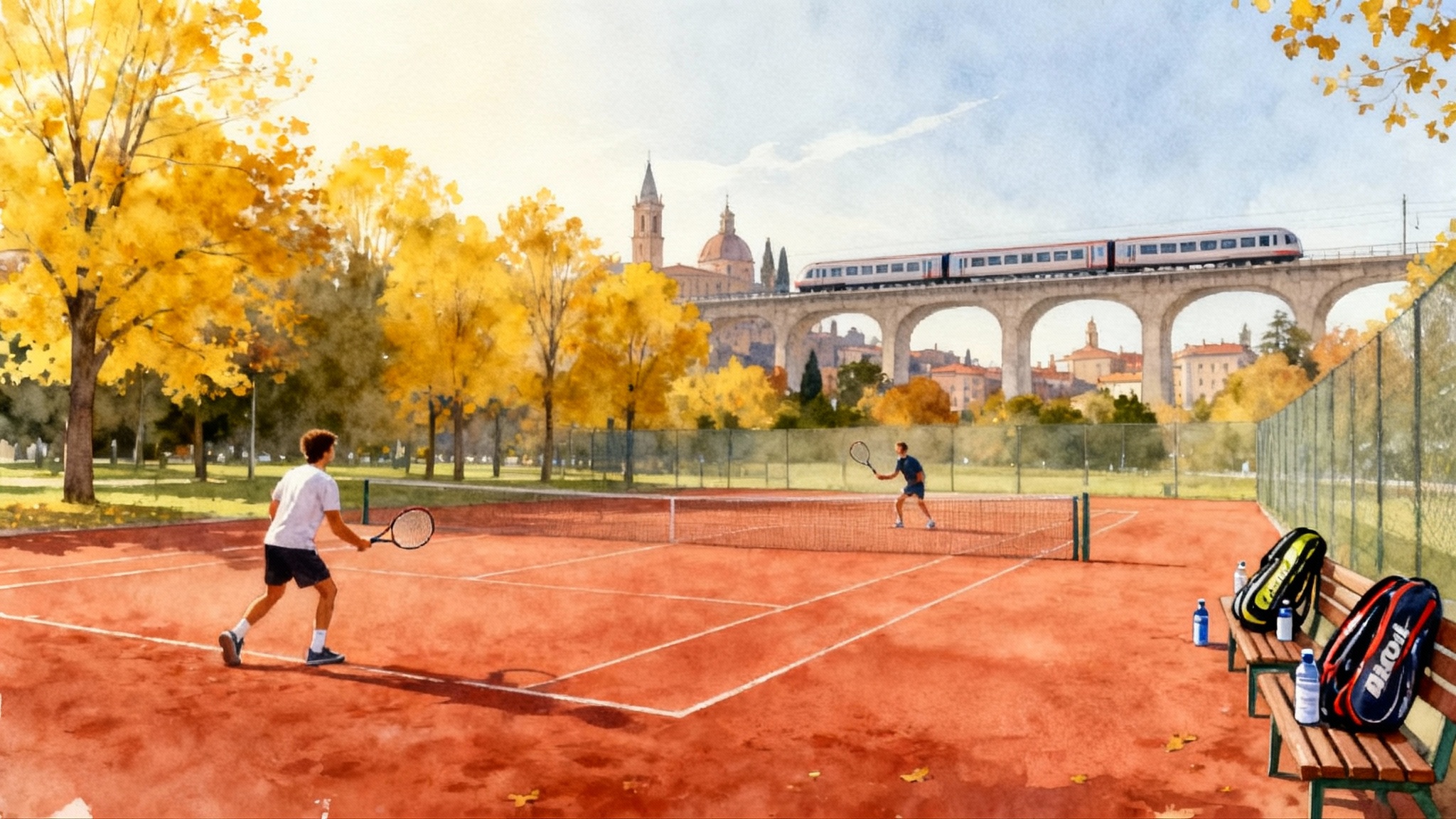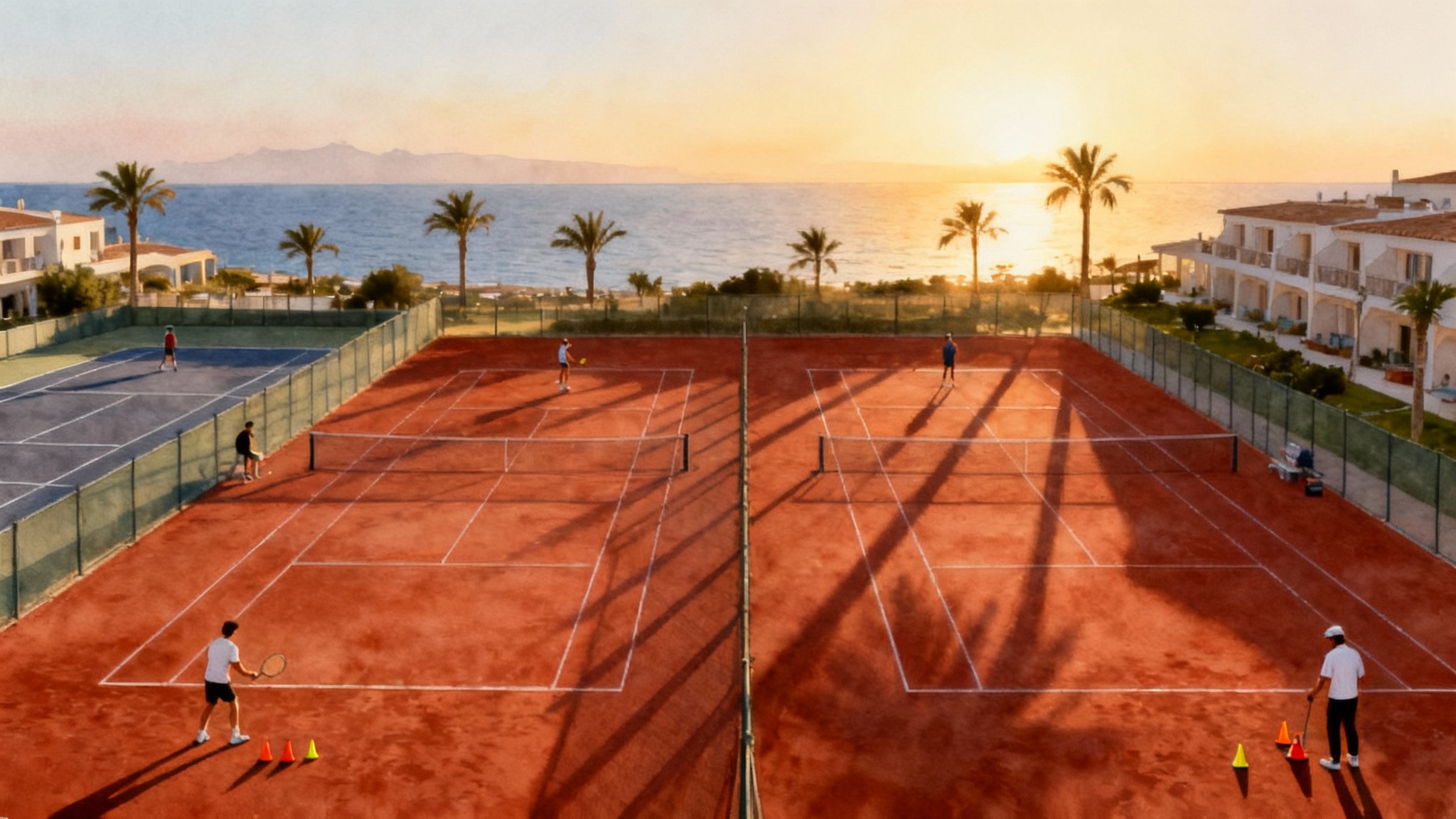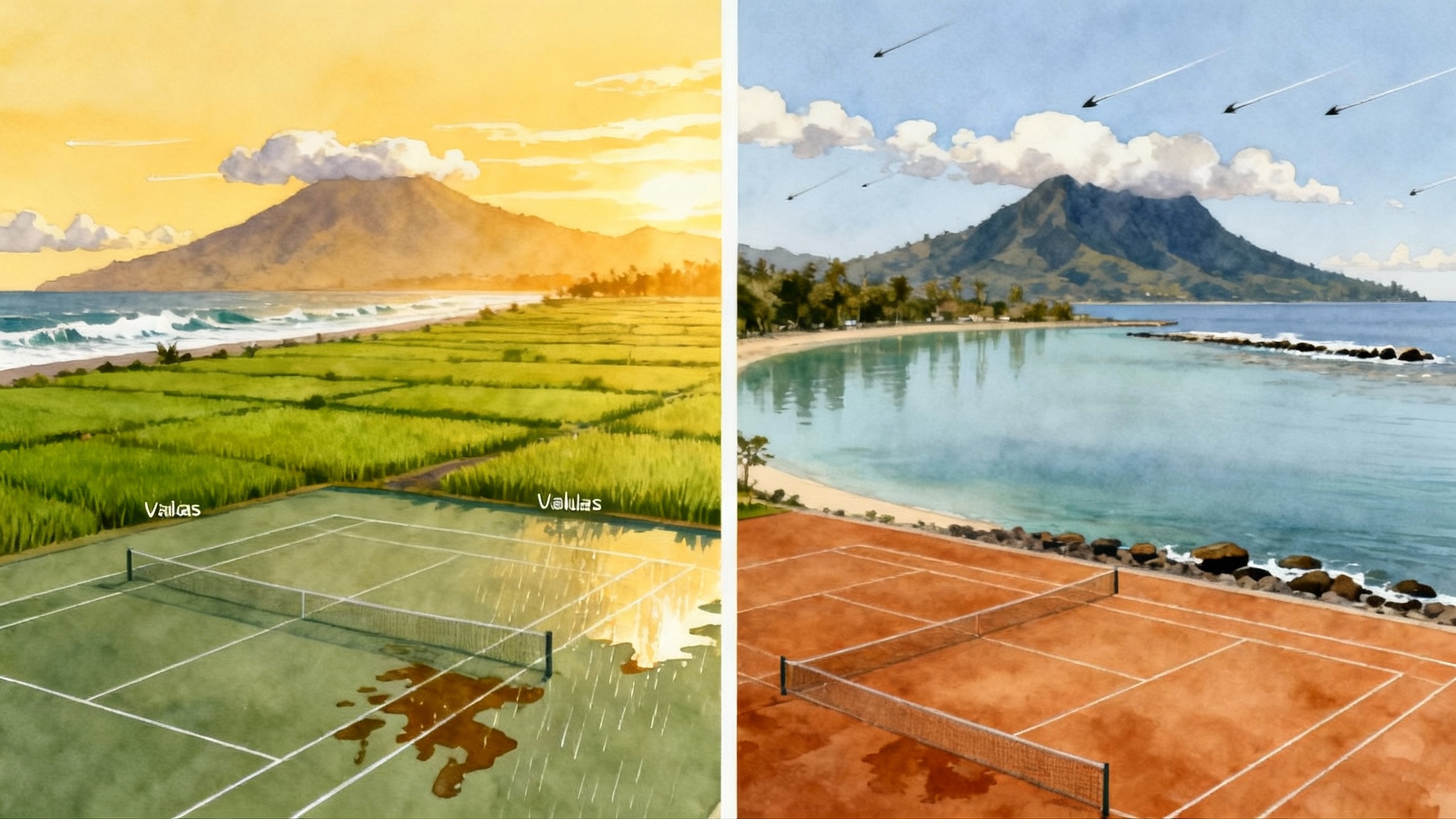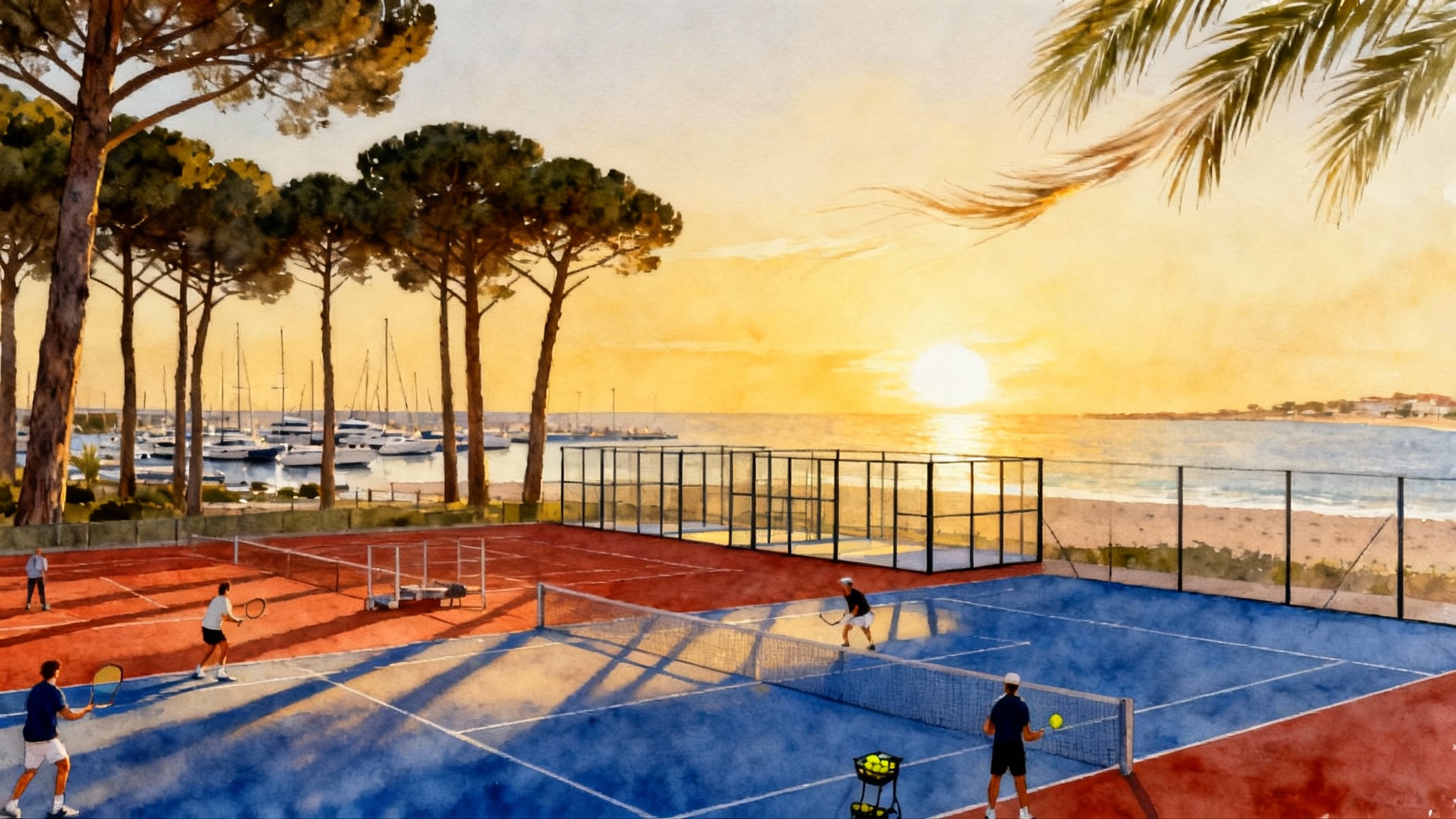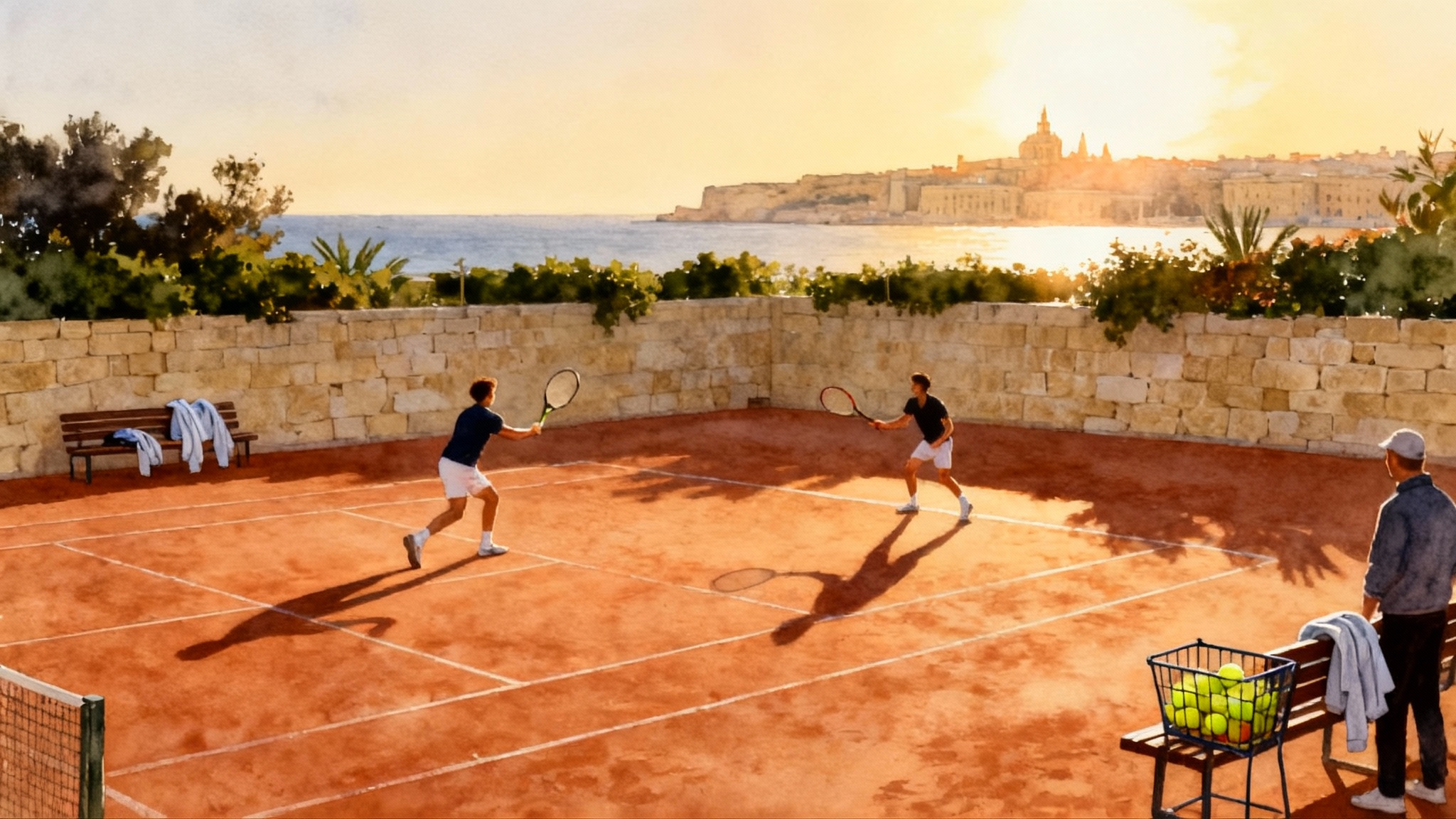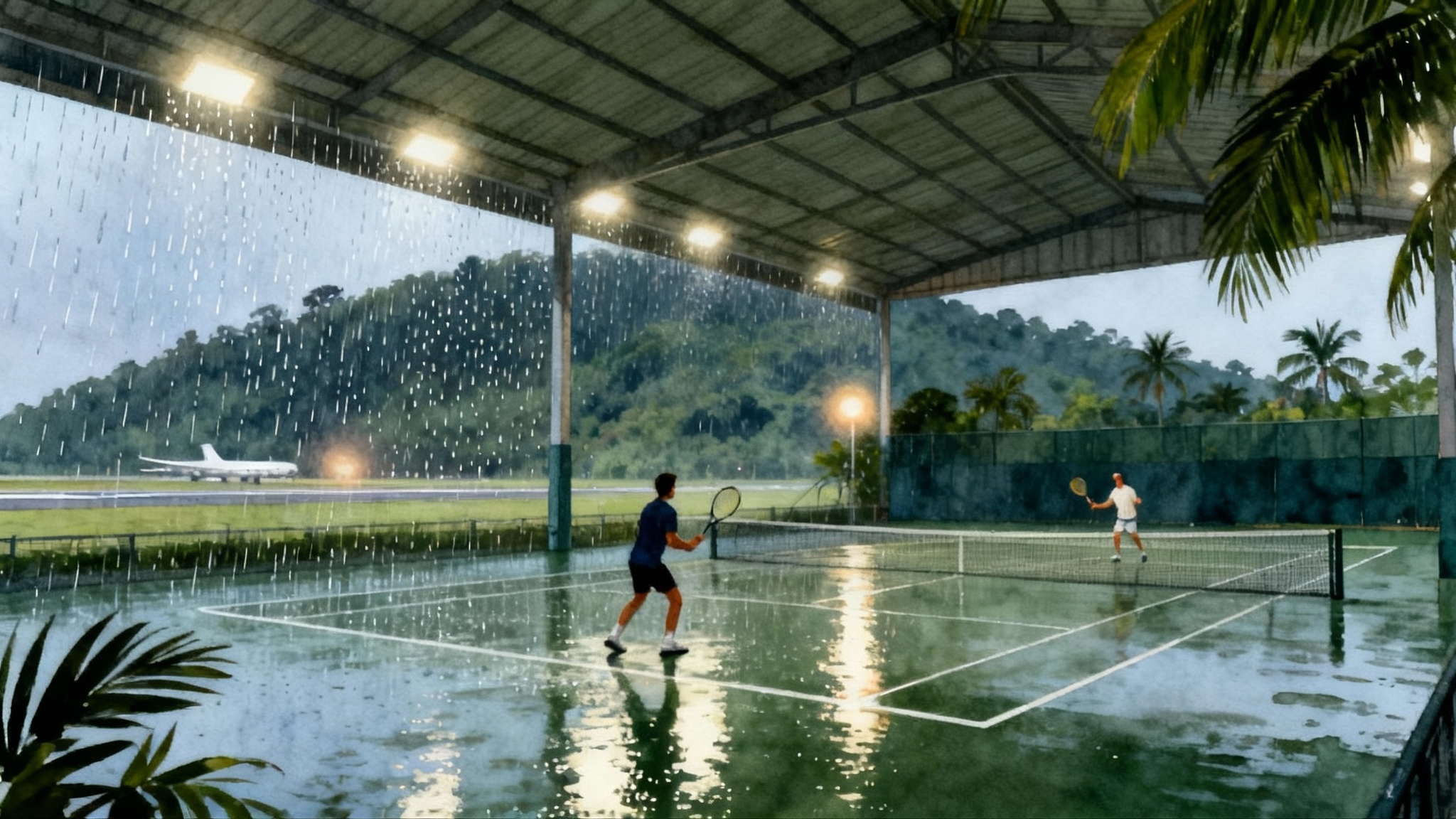Marine-Layer Tennis in Santa Cruz–Monterey: A 2025–26 Guide
A climate-first playbook for year-round outdoor tennis on California’s Central Coast. Learn how fog, cool temps, and onshore winds shape training, when and where to play, gear tweaks for humidity, travel tips, and a 5–7 day camp plan.

Why the marine layer is your secret coach
Stand on a Santa Cruz baseline at 7 a.m. in October and you can feel it. The air is cool, the light is diffused, the ball grips the strings a split second longer. You are playing inside the marine layer, a shallow blanket of cool, moist air hugged to the coastline by Pacific upwelling and onshore flow. The physics are simple enough to exploit: cooler air is denser, humidity changes how felt behaves, and light winds nudge ball flight. If you train to those conditions, you get two dividends. You build patterns that hold up under pace, and you recover faster because you are not cooking under inland heat. For a tennis calendar that runs through winter, the Santa Cruz–Monterey corridor becomes a natural base.
If you want a quick primer on what the marine layer is and why it forms, this National Weather Service explainer on marine layers is concise and reliable. For a rain-secure fallback during stormy spells, see our Seattle–Vancouver indoor corridor guide.
The physics in plain terms
- Cooler air has more molecules per cubic foot, which increases drag. Your topspin forehand will dive a bit sooner, and a sliced approach will sit a touch heavier.
- Humid air slightly reduces air density, but in tennis the bigger effect is on the ball’s felt. Moisture makes the fuzz stand up and increases friction on the strings and in the air. That means more spin at a given swing speed, but also a slower ball through the court.
- Onshore winds arrive as a gentle push from west or northwest most afternoons. That cross-breeze rewards a lower, heavier ball and exposes any floaty contact.
What that means for training windows
- Morning reps are honest. The ball does not fly as far, so you must generate shape and pace. That is the perfect time for pattern work and serve accuracy.
- Midday clears are for speed. When the fog lifts, courts play slightly faster and you can layer in first‑strike points, transition patterns, and return depth under pace.
- Late afternoons teach problem solving. A light onshore wind introduces lateral movement. Footwork, contact height, and margins become the session focus.
The Central Coast microclimate map
You can drive 20 minutes and change the court’s personality. Use these microclimate notes to choose your court and time of day.
- Santa Cruz Westside: Often coolest and cloudiest in the morning with dependable afternoon breeze. Great for control sessions, lefty serve work into the breeze, and rally tolerance blocks.
- Capitola and Soquel: Slightly warmer and more sheltered than the Westside. Good for junior drilling and serve plus one reps. Courts dry faster after overnight fog.
- Aptos and Seascape ridge: Warmer by a few degrees, with less morning cloud. The ball jumps a bit more, helpful for confidence blocks after heavier sessions closer to the water.
- Monterey coast from Cannery Row to Del Monte Beach: Marine influence all day is common. Expect consistent cool temps and wind that builds after lunch. Use mornings for precision serves and afternoons for wind games.
- Pacific Grove: Similar to Monterey, with a crisp breeze and quick cloud returns. Great for volleying and approach work because ball sits and rewards clean positioning.
- Carmel-by-the-Sea: Mornings can be calm and cool, afternoons breezier. If you like quiet courts and disciplined point building, this is your venue.
- Carmel Valley: Ten to fifteen minutes inland but often ten degrees warmer. Use it for speed work, live ball, and match plays when you want more bounce and drier felt.
For another microclimate blueprint in Europe, read our Grasse–Valbonne microclimate guide.
Best months and best dayparts
The Central Coast is playable year round. The trick is selecting your windows.
- September to November: Peak outdoor training season. Cool mornings with light fog, sun by late morning, a gentle breeze by midafternoon. Prioritize long pattern blocks, serve targets, and match play on weekends.
- December to February: Cool to chilly mornings, more frequent light rain, and longer marine layer. Book earlier dayparts for precision and footwork. Keep a warm inland backup like Carmel Valley for speed days.
- March to May: Transition season. More variability with spring wind. Great for return games, high ball tolerance, and transition patterns.
- June to August: Classic coastal summer with morning overcast and afternoon clears. The flip side of inland heat waves: you keep practicing outdoors while others move inside.
Daypart guidance:
- Early morning, 7–10 a.m.: Precision work, serve mechanics, patterning, and fitness circuits. Expect denser air and damp felt that buffers pace.
- Late morning to early afternoon, 10 a.m.–1 p.m.: Tempo work, return depth, plus transition patterns as courts dry and speed up.
- Mid to late afternoon, 2–5 p.m.: Wind management. Work on height, shape, and court position against a steady onshore push.
- Evening, 5–7 p.m.: Cooler again, less wind. Good for serve plus one rehearsals and short competitive sets.
Gear and string-tension tweaks for humid coastal conditions
Small adjustments pay off in cool, moist air. Use these as a starting point, then test.
- Balls: Bring heavy duty felt for hard courts. In moisture, regular felt fluffs up faster and can feel mushy after a single set. Rotate a second can at 45 minutes for live ball blocks.
- Strings and tension: If you play full polyester at 52 pounds inland, drop to 48–50 pounds for coastal mornings to keep depth without overswinging. If you run a hybrid, consider a slick poly in the mains at 48 and natural gut or multifilament in the crosses at 50–52 for spin plus pocketing. In afternoon wind, a one to two pound bump restores control.
- Frame setup: A touch of lead at 3 and 9 o’clock steadies contact in wind. Keep swingweight manageable so footwork stays honest.
- Dampeners and grommets: Moisture can raise string noise and vibration feel. A soft dampener calms the bed without muting feedback.
- Grips and shoes: Overgrips get slick faster in fog. Rotate one per session and carry a rosin bag. Choose outsoles with a fresh edge; damp acrylic hard courts reward tread.
- Apparel: Layer a thin merino or performance long sleeve over a breathable tee for the first 30 minutes. You warm up without sweating through gear in cool air.
Where to train and how to pair with the Academy
For structured blocks, pair your self-led sessions with coaching days at the Santa Cruz High-Performance Tennis Academy. Morning technical pods exploit the denser air for contact discipline, while afternoon live ball teaches shape and margin against the breeze. The Academy can also stage match play sets in Aptos or Carmel Valley when you want a warmer, livelier ball.
Sample use of the pairing:
- Monday: Your morning serve targets in Santa Cruz Westside, Academy afternoon live ball in Monterey to add wind variables.
- Wednesday: Academy pattern session in Capitola late morning, your evening set play in Carmel-by-the-Sea as temps dip and wind calms.
- Friday: Academy fitness and footwork block, then your recovery mobility session with beach walk on West Cliff.
Travel logistics made simple
Airports
- San Jose International Airport: The most efficient gateway in fall and winter. Typical drive times are 45 to 75 minutes to Santa Cruz via Highway 17, traffic dependent.
- San Francisco International Airport: Wider flight options. Plan on 90 to 120 minutes to Santa Cruz, longer at peak commute hours.
Getting around
- Rent a car for court hopping. Microclimate flexibility is your advantage, and short drives unlock warmer or windier venues when training goals change.
- Highway 17 over the Santa Cruz Mountains can be foggy or wet in winter. Leave buffers around early sessions and check conditions if rain is forecast.
Neighborhoods and stays
- Santa Cruz Westside: Walkable to cliffs and morning fog runs. Vacation rentals and boutique inns cluster near West Cliff Drive.
- Capitola Village: Sheltered mornings and easy food options between sessions. Good for junior families and small adult groups.
- Monterey Cannery Row and Downtown: Short walks to coastal paths for warmups and cooldowns. Hotels range from budget to luxe.
- Carmel-by-the-Sea and Carmel Valley: Choose Carmel-by-the-Sea for quiet foggy mornings or Carmel Valley for warmer afternoon match play and resort amenities.
Courts to scout
Public parks and school complexes in Santa Cruz, Capitola, Aptos, Monterey, Pacific Grove, and Carmel typically offer mixed surfaces and wind exposures. Resort or club options in Aptos and Carmel Valley provide backup on drizzly mornings. Call ahead for day passes or guest policies, and always bring a squeegee and towels during the wet season.
Food and recovery
- Breakfast near courts: Bakeries and cafes open early across Santa Cruz and Monterey. Choose simple carb plus protein combos that sit light before morning reps.
- Between sessions: Soups, burritos, grain bowls, and smoothies are easy to digest. Hydrate with electrolytes even in cool weather. Fog can mask sweat loss.
- Evenings: Keep dinners moderate and finish two to three hours before lights out so sleep quality stays high for the next morning’s block.
Sample camp plans for juniors and adults
Below are two road-tested outlines you can adapt. Use the mornings for accuracy when the marine layer is thickest, add pace and wind challenges later.
Seven-day plan
Day 1, Santa Cruz Westside
- AM: Baseline assessment and filming. Forehand and backhand height windows, neutral rally tolerance at 20-ball targets.
- Midday: Mobility and breathing. Beach walk to cue nasal breathing in cool air.
- PM: Serve accuracy to all three targets, 40 balls per box. Finish with deuce and ad patterns to first ball depth.
Day 2, Capitola or Soquel
- AM: Return of serve footwork ladders, split-step timing, and deep crosscourt returns.
- PM: Transition patterns, approach plus first volley against ball that sits in cool air. Two tiebreak sets.
Day 3, Monterey
- AM: Slice backhand and low ball tolerance. Wind gives feedback on shape.
- PM: Live ball to 11 with wind-aware scoring. Extra point for balls that land within two feet of the sideline with margin over the net strap.
Day 4, Carmel Valley
- AM: Speed day. Serve plus forehand with first-strike tempo on warmer courts. Add second serve plus two-ball aggression.
- PM: Recovery swim or mobility, then scouting notes from video.
Day 5, Santa Cruz or Pacific Grove
- AM: Patterns under fatigue. Two on, one off circuits: 8 minutes live rally to deep corner cones, 4 minutes rest.
- PM: Doubles patterns. First volley depth and poach timing in breeze.
Day 6, Player’s choice microclimate
- AM: Technical tidy-up based on match video and notes.
- PM: Match play. Best of three sets with a 10-point tiebreak in lieu of a third.
Day 7, Deload and test
- AM: Serve test and neutral rally test. Compare to Day 1.
- PM: Debrief and home plan. Equipment tweaks locked in for your inland or home conditions.
Five-day plan
Day 1: Baseline test, serve targets, evening recovery walk.
Day 2: Returns and transition in Capitola, doubles patterns late.
Day 3: Wind day in Monterey, live ball and scoring games.
Day 4: Warm-court speed in Carmel Valley, video review.
Day 5: Match play in microclimate of choice, exit test, and gear plan.
Junior considerations
- Keep sessions 90 minutes with clear themes. Cool mornings are perfect for technique, afternoons for competitive games.
- Use bright cones and simple scoring constraints so wind and fog become allies rather than distractions.
- Provide two dry overgrips per session and a spare hoodie for the post‑session cooldown.
Adult considerations
- Front‑load technique and serve work early in the day, and extend the warmup to protect shoulders in cool air.
- Use short competitive formats in afternoon wind to train decision making without overloading volume.
- Add two strength micro-sessions across the week, 25 minutes each, focused on calves, hips, and shoulder external rotation.
Safety and recovery in cool, moist air
- Warmup: Extend your dynamic warmup to 12–15 minutes. Include ankle hops and calf raises because damp courts are less forgiving.
- Hydration: Use electrolytes even when it feels cool. Fog hides sweat loss and wind increases evaporation.
- Skin and eyes: Light is diffused but ultraviolet exposure is real. Apply sunscreen and wear clear or light amber lenses for low-contrast mornings.
- Court care: Wipe lines if there was overnight drizzle. Lines can be slick before the sun lifts the moisture.
Booking checklist you can copy
- Choose your priority: control, wind problem solving, or speed on warmer inland courts.
- Pick a hub: Santa Cruz Westside for cool mornings, Capitola for balanced days, Monterey for wind lessons, or Carmel Valley for speed.
- Slot dayparts: technical mornings, tempo middays, wind afternoons.
- Set your string plan: coastal baseline at 48–50 pounds for poly, adjust 1–2 pounds for afternoon wind.
- Pack spares: overgrips, dampeners, towels, a compact squeegee, and heavy duty balls.
- Coordinate with the Academy: book coaching blocks that match your goals through the Santa Cruz High-Performance Tennis Academy.
The point of a coastal base
The Central Coast does not ask you to be a weather expert. It asks you to notice. Cool, dense air rewards clean contact. Moist felt reinforces spin and shape. Onshore wind teaches height, margin, and court position. Stack those lessons across fall and winter and your patterns harden in a way indoor winters cannot match. Plan your dayparts, tune your gear, and let the marine layer coach you when the ball leaves your strings. Your spring and summer results will reflect the work you did when the ocean kept the courts calm, cool, and honest.

